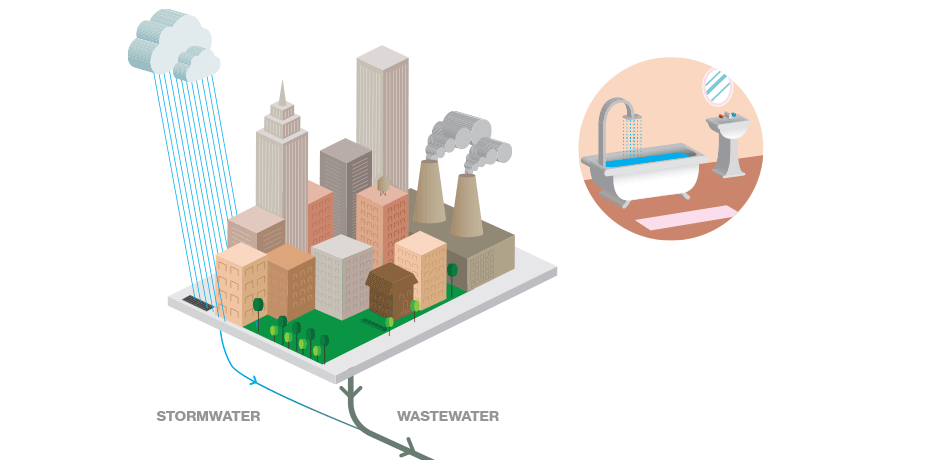Enhanced Waste Water Treatment Solutions for Sustainable Water Administration
Enhanced Waste Water Treatment Solutions for Sustainable Water Administration
Blog Article
Strategic Approaches to Enhance Drainage Treatment Effectiveness and Decrease Environmental Impact
In the realm of waste water therapy, the mission for improved effectiveness and decreased environmental impact is a perpetual difficulty that demands calculated services. The combination of advanced treatment technologies, energy-efficient processes, source recovery techniques, enhanced nutrient removal techniques, and clever surveillance and control systems stands for a diverse structure for attending to these pressing concerns.
Advanced Treatment Technologies
Cutting-edge membrane layer filtration systems have revolutionized advanced wastewater therapy processes, considerably boosting the removal of contaminants. These cutting-edge systems work forcibly water via a semi-permeable membrane, successfully dividing impurities from the water stream. The membrane's tiny pores catch pollutants such as germs, infections, and put on hold solids, allowing only cleansed water to travel through. This modern technology has verified to be very reliable in removing a vast array of contaminants, consisting of drugs, hefty metals, and organic substances, which are often challenging to get rid of via typical treatment techniques.
Additionally, membrane filtration systems provide countless advantages over traditional treatment methods. They call for much less area, create higher-quality effluent, and are more resistant to variations in influent water top quality. Additionally, these systems are highly functional and can be conveniently integrated into existing therapy plants or made use of as standalone systems for decentralized applications. As the demand for tidy water proceeds to rise, the fostering of innovative membrane filtration modern technologies is vital to make certain sustainable and effective wastewater treatment techniques.
Energy-Efficient Procedures
The combination of energy-efficient procedures in wastewater therapy systems is critical for maximizing source utilization and minimizing functional prices. One vital approach to enhancing energy effectiveness in wastewater therapy is the utilization of advanced aeration systems, such as fine bubble diffusers or surface aerators, which can enhance oxygen transfer effectiveness and lower power consumption.
Additionally, maximizing process control and automation with making use of advanced sensors and checking systems can enhance overall energy efficiency by adjusting operations in real-time based on actual need and problems. Implementing power audits and frequently checking power performance indicators are vital techniques to identify areas for improvement and track energy-saving initiatives effectively. In general, the adoption of energy-efficient processes in wastewater treatment not only profits the setting however additionally contributes to long-lasting expense savings and operational sustainability.
Source Recuperation Strategies
With a focus on optimizing resource usage and sustainability in wastewater treatment systems, the implementation of source healing approaches arises as a critical facet in boosting operational efficiency. Source healing methods in wastewater therapy involve the identification and removal of valuable resources from the waste stream, thereby transforming what was as soon as taken into consideration waste right into a useful possession. By implementing resource healing methods such as nutrient elimination and recuperation, energy generation from natural matter, and the manufacturing of recyclable water, wastewater treatment plants can decrease ecological influence while optimizing performance.

Enhanced Nutrient Elimination Strategies
Applying sophisticated nutrient elimination methods is vital for maximizing the effectiveness of wastewater treatment systems. One of the vital methods used for boosted nutrient elimination is the procedure of organic nutrient elimination (BNR), which involves the removal of nitrogen and phosphorus through biological processes.

Along with BNR, progressed treatment approaches such as membrane bioreactors (MBRs) and constructed marshes can likewise be used to improve nutrient removal effectiveness. MBRs use membranes to accomplish top notch effluent standards by efficiently getting rid of nutrients and suspended solids. Built wetlands resemble natural wetland processes to eliminate nutrients with plant uptake, microbial activity, and sedimentation. By incorporating these advanced nutrient removal strategies into wastewater treatment systems, towns and sectors can successfully decrease nutrient air pollution and safeguard the setting.
Smart Tracking and Control Equipment
Using cutting-edge look at here now modern technology, the combination of wise tracking and control systems revolutionizes the functional performance of wastewater therapy facilities. These systems incorporate sophisticated sensors and data analytics to continually keep an eye on crucial parameters such as pH degrees, turbidity, dissolved oxygen, and flow rates in real-time. By gathering and assessing this data, drivers can get valuable understandings into the performance of the therapy procedures, enabling aggressive adjustments to maximize therapy performance.
Smart tracking and control systems additionally sustain remote tracking capacities, allowing drivers to accessibility real-time data and control functions from off-site locations. This remote accessibility boosts functional versatility and responsiveness, allowing swift treatments in situation of system malfunctions or changes in influent quality. Furthermore, the anticipating upkeep abilities of these systems assist prevent equipment failings and lessen downtime, inevitably enhancing the overall integrity of wastewater therapy procedures (Waste Water Treatment).
Final Thought
Finally, tactical approaches such as innovative treatment technologies, energy-efficient processes, source recuperation approaches, improved nutrient removal strategies, and wise tracking and control systems play an essential duty in improving wastewater treatment performance and lessening environmental effect. By implementing these strategies, wastewater treatment plants can improve their general performance, reduce energy consumption, recoup useful sources, and guarantee compliance with environmental regulations. These techniques are vital for sustainable and efficient wastewater management methods.

In conclusion, critical techniques such as advanced therapy modern technologies, energy-efficient processes, source recuperation techniques, enhanced nutrient elimination strategies, and smart surveillance and control systems play a critical duty in boosting wastewater treatment efficiency and minimizing environmental influence.
Report this page